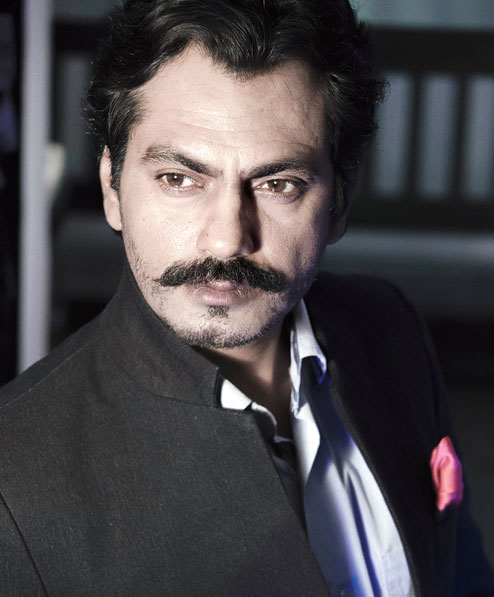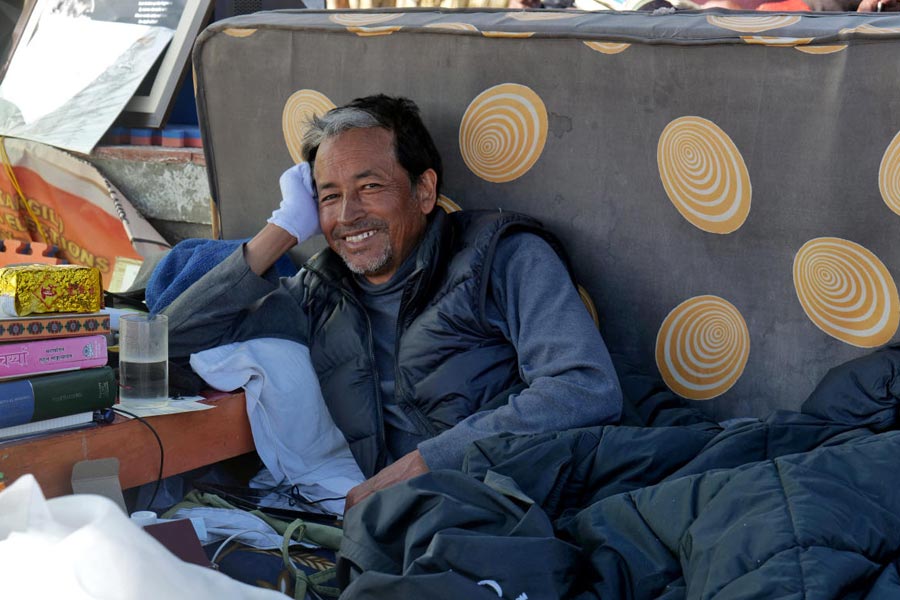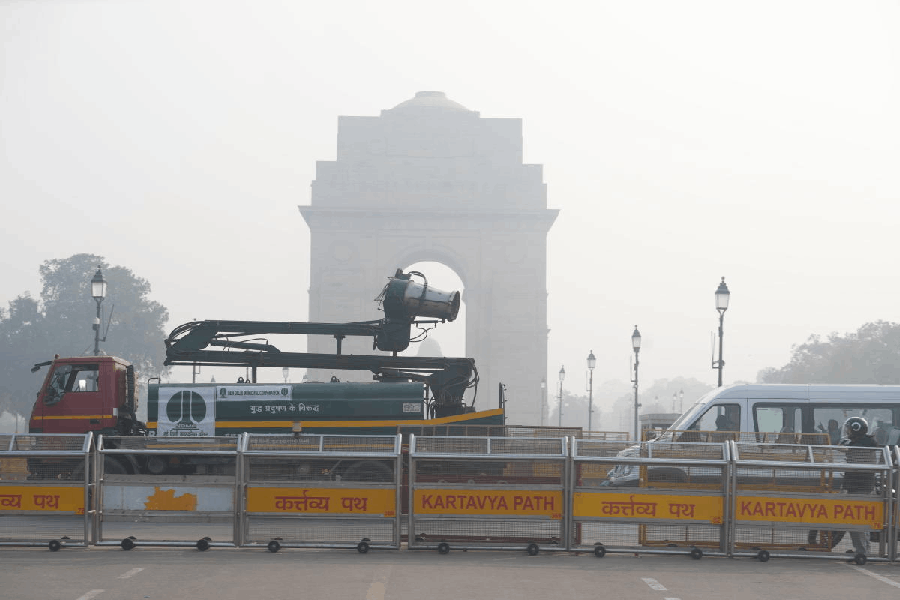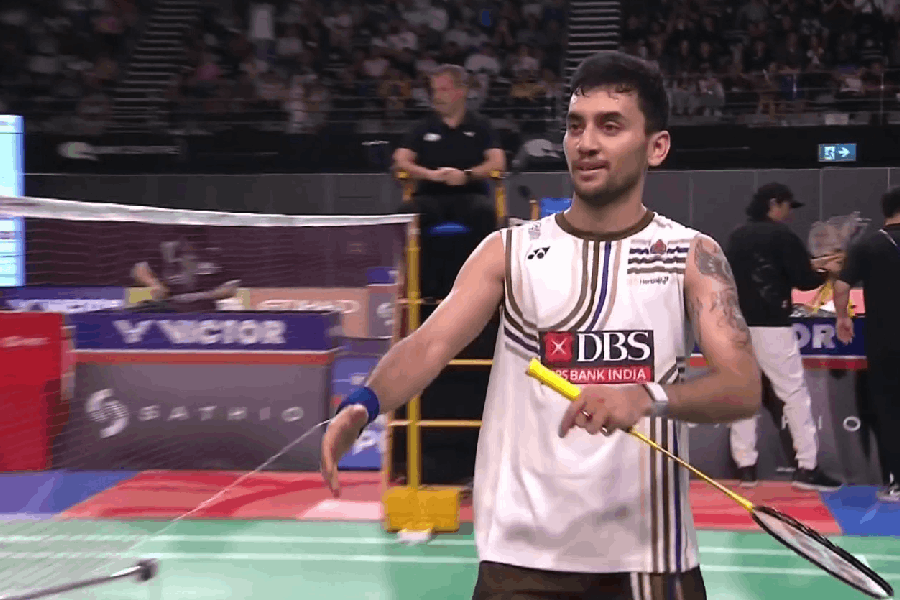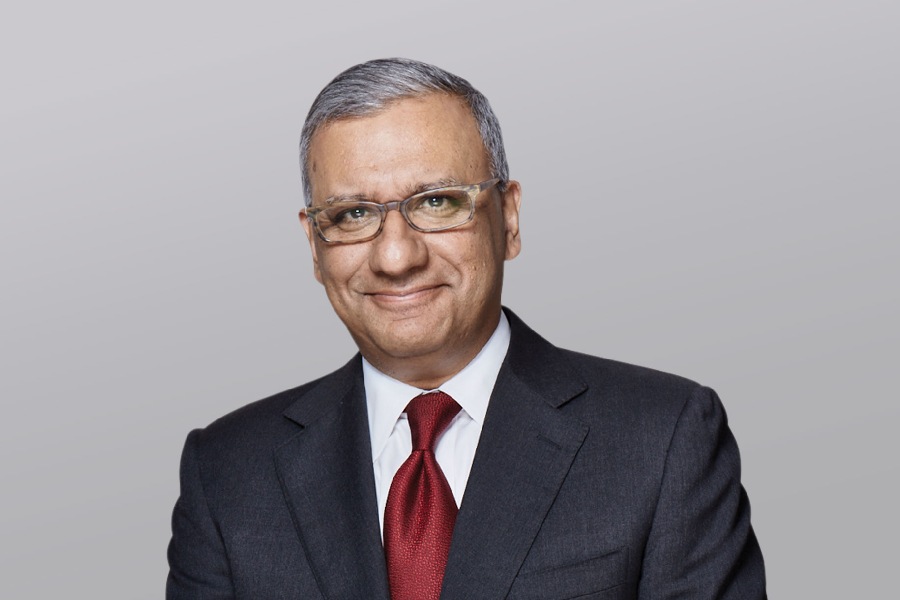
Even though he’s now big-time, actor Nawazuddin Siddiqui doesn’t know the meaning of taking it easy. “Since morning, I’ve been dubbing for Sohail Khan’s movie Freaky Ali. Then I followed that with a narration for four movies. And this — incidentally — is my rest day,” says Siddiqui, taking a long puff on a cigarette.
The actor’s diary is chock-a-block — a far cry from the lean years when he was struggling for roles. Freaky Ali, Siddiqui’s first romantic comedy, releases in September. He also plays the lead in Kushan Nandy’s Babumoshai Bandookbaaz. And he takes on the role of a cop in the much-awaited Shahrukh Khan and Pakistani actor Mahira Khan starrer Raees, which is scheduled to hit the screens next January. He also makes a special appearance in the Sridevi-starrer Mom, due for release next year too. On top of that, he’s signed up with actor-director Nandita Das to play Saadat Hasan Manto, the Indo-Pakistani writer, playwright and author who’s ranked as one of South Asia’s greatest-ever short-story writers. Says Das: “Nawaz has played so many different characters so effortlessly that I have no doubt that when we see Nawaz on screen, we will see Manto.”

And even though his career’s come a long way, Siddiqui confesses he still gets jittery when facing the cameras. “I’ve more experience, which makes it easier to play a role, but I still get nervous,” confides the 42-year-old actor, who’s clad casually in blue jeans and a black shirt, topped off with a jaunty black beret.
Despite having made his mark, Siddiqui has none of the airs that sometimes come along with being famous. He reaches exactly on time for our interview and walks in minus the entourage that habitually accompanies Bollywood stars. This lack of pretension may have something to do with his tough ride to the top. “I didn’t come to Mumbai to be a star. I’d hoped to act in some TV serials,” says Siddiqui, who hails from Budhana village in Uttar Pradesh. Roles were tough to come by and he struggled with one-scene roles for 12 years before hitting pay dirt and landing a string of movie deals.

Siddiqui likes to get under the skin of his characters — and the more difficult they are, the better. He recently won plaudits for Raman Raghav 2.0, in which he played the eponymous psychopath killer. Siddiqui delved with great passion into the character of the man who killed 42 people. He read whatever was available about Raman Raghav and watched interviews with psychopaths to understand their psyche. “I wanted to know this person’s mindset — someone who doesn’t feel anything when he murders. I delved so deep that the difference between right and wrong blurred,” he says.
Raman Raghav 2.0, though, wasn’t his first shot at a biopic. Siddiqui earlier played Dashrath Manjhi, a poor labourer who carved a 110m path through a hillock using only a hammer and chisel in 22 years near Gaya in Bihar. For Ketan Mehta’s movie Manjhi - The Mountain Man, Siddiqui watched YouTube videos of the man and went to Manjhi’s village Gehlaur to spend time with his son and daughter-in-law. “For a biopic, one should play the way a person spoke or walked,” he insists. And this attention to detail doesn’t just stop at leads. He sinks his teeth into every role he gets. Sometimes, Siddiqui plays it by the ear while developing the nuances and specifics of his character. “The character itself tells you the process to play it,” he says.
But while Siddiqui, who got the Special Jury Award at the National Awards for Kahaani, Gangs of Wasseypur II (GOW II) and Talaash in 2013, embraces a character wholeheartedly, he also quickly pushes it out of his life after he’s played it. “Otherwise, it would be difficult to play another character,” he says. To get the character out of his system, “I go somewhere, often to my village, and start farming”, he adds.



Siddiqui has already played a range of characters but the desire to surpass still burns bright. “One life isn’t enough. I need two. And in the second, I’d like to start with experiences I’ve accumulated in the first,” he says. He says he can’t name which has been his best role so far. However, there is one thing that he is sure about. “I don’t like straightforward roles. For 60 years, you’ve seen the same typecast, clichéd hero. Even if I play the hero I want it to have layers, where the character’s a little different — maybe slightly crooked,” he says. The comfort zone is a place that Siddiqui tries to avoid at all costs.
Film critic, editor and movie trade analyst Taran Adarsh is glowing in his assessment of Siddiqui’s talents: “He’s a brilliant actor. His USP is his versatility.”
But his stint in acting almost didn’t happen. Sheer tenacity and boredom got Siddiqui where he is today. The eldest of the eight children of a landowner, he studied chemistry and started working in a petrochemical factory in Vadodara. “I grew bored after a year and my friends took me to watch plays and that’s how I got hooked,” he recalls. Still in his early 20s, he started acting in Gujarati plays. On a whim, Siddiqui quit his job and went to Delhi to pursue an acting career. Within a short span, he’d watched about 60 plays and joined a theatre group, Sakshi.

A year later, in 1993, Siddiqui enrolled at the prestigious National School of Drama which gave him lots of exposure and expanded his repertoire enormously and he worked with renowned Indian directors like Prasanna and Robin Das. But rather than his intensity, it was his comic timing that made Siddiqui remarkable at that point. “People came to watch me as a comedian,” he says At the end of third year, though, he was cast for a totally different role in a play directed by Valentin Teplyakov, a Russian director, who chose his actors unconventionally. “His assistant collec-ted photographs of each of the 20 students, covered the faces while leaving just the eyes exposed. Casting was on the basis of our eyes,” recalls Siddiqui.
He was selected to play Michael Borkin, an intense character in Anton Chekhov’s play Ivanov. The show went well and it also changed the nature of roles that interested Siddiqui. He stayed in Delhi four more years, acting in street plays, before making his way to Mumbai in 2000. He hoped to work in TV serials but his talents were often spurned. “The directors said they needed extra lighting for me and this meant they needed to spend a longer time shooting,” shrugs Siddiqui. He tried his luck in movies and ended up working in some C-grade ones. And how did he survive? “Udhar zindabad (Long live loans),” he laughs.
Still, Siddiqui became a one-scene wonder in some landmark movies. In Sarfarosh (1999) he played a criminal, in Shool (1999) a waiter and in Munnabhai MBBS (2003) a pickpocket. “People felt though I did just one scene, I did it well. So they kept calling me for one-scene roles!” he says. He gradu-ated to a three-scene role with the
Anurag Kashyap movie, Black Friday, playing one of the 1993 blast accused. Finally, around 2009, cinema started changing and newer directors made small-budget movies where actors like Siddiqui got a chance.

It was in Anusha Rizvi’s Peepli Live (2010) that Siddiqui played his first substantial role — of a journalist. “I’d been struggling for 10 to 12 years and people finally realised I wasn’t a bad actor,” says Siddiqui, now a vete-ran at the Festival de Cannes. Eight of his movies (one as a producer) have been screened there. Sundance, Berlin, Tribeca, Toronto as well Busan are some of the other film festivals where his movies have been screened, while Peepli Live was India’s entry at the 83rd Academy Awards.
And when Prashant Bhargava, an award-winning US filmmaker, wanted to cast an actor rather than a star in
Patang (2012), Siddiqui was a natural choice. “Cinematically, the process of Patang was extremely important to me,” he says. Besides a few professional actors including Seema Biswas, the rest of the cast were amateurs from
Ahmedabad, where the movie was set. Patang released in North American theatres in June 2012 and received rave reviews, including a rare four stars from renowned US film critic Roger Ebert.
Even back home, 2012 was a momentous year for Siddiqui. Three movies — Kahaani, GOW II and Talash were released in quick succession — and the rest, as they say, is history. “Within a month of the releases of GOW II, I had read 200 scripts as directors wanted to cast me in their movies,” he says.
Still, he believes the industry can be pretty fickle. “I can’t say I’ve friends in the industry. Here, one has friends till one’s successful. A bit of a downfall and they disappear. It’s best not to have any expectations of people,” he says.
The actor, who displayed his comic timing as the Pakistani journalist Chand Nawab in the 2015 Salman Khan blockbuster Bajrangi Bhaijaan, also isn’t enamoured with big-budget movies.
“It doesn’t matter if it’s big-budget and earns crores or a small-budget movie that doesn’t earn anything. For me, acting’s not about the 100-crore club. If I do a character and gain knowledge, I can’t measure it in terms of money. My journey and my discovery are special. That’s it!”

